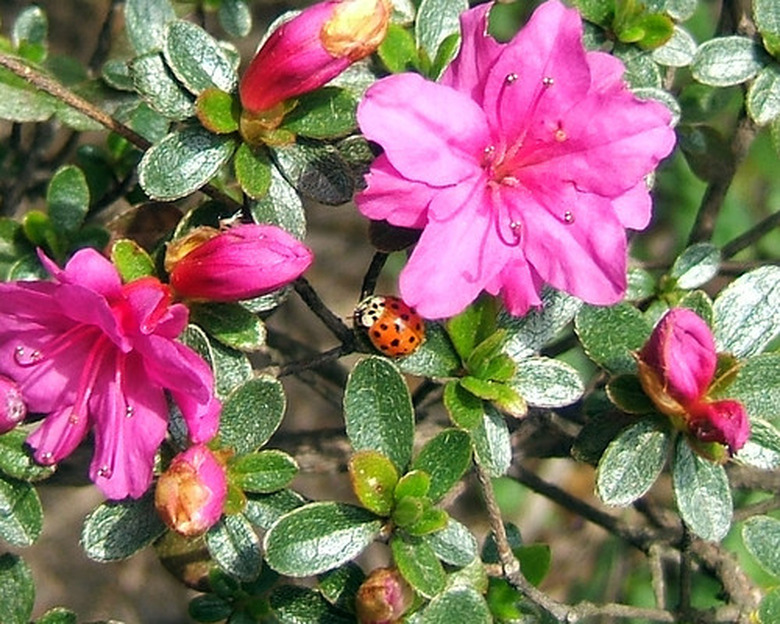Azaleas In The Winter
Azaleas are an extremely popular and gorgeous spring flowering shrub. They can be either deciduous (dropping their leaves in the winter), or evergreen (holding on to their leaves throughout the year). These beautiful plants do require protection during the winter season–even in areas that are frost free.
Fall Watering
Azaleas need to go dormant during the winter season. Therefore, it is important that they harden off before the winter season. You should reduce the amount of water that you give your azaleas as the first frost approaches (approximately one month before you expect your area to receive its first frost). Continue winterizing your azaleas after several frosts by watering the soil once again; this should be done before the weather completely changes over to the winter's extended cold. This provides adequate moisture during the frequent temperature changes of the winter season (warmer and colder days).
- Azaleas are an extremely popular and gorgeous spring flowering shrub.
- Therefore, it is important that they harden off before the winter season.
Pruning
Part of the winterizing process also includes pruning your azalea bushes (both deciduous and evergreen azaleas). Deciduous and evergreen shrubs should be trimmed back to improve the shape and size of the plant and also to remove any broken or diseased branches.
Mulch
Mulching around the base of the shrubs will provide protection and maintain the moisture of the soil. Mulch should be approximately 2 inches in depth and be spread down from the base of the plant outward to cover the underlying root area. You can use cedar, cypress or hardwood mulch. You may also choose to protect your azaleas with evergreen branches or straw.
Burlap Cover
A covering of burlap will also help to protect your shrubs. This is mostly used in areas where the shrubs are exposed to extremely cold winter temperatures and fluctuating temperatures. You can cover them completely with a burlap sack, or you may choose to put several stakes around the circumference of the plant and position the burlap around the stakes–covering the outside of the shrub, thus protecting it from harsh winter winds.
- Part of the winterizing process also includes pruning your azalea bushes (both deciduous and evergreen azaleas).
- You may also choose to protect your azaleas with evergreen branches or straw.
Winter Leaf Discoloration
Some azaleas may develop discolored leaves during late winter. This is no cause for alarm–it appears worse than it is. Discoloration can be yellow leaves or reddish-brown leaves. The discoloration is due to a nitrogen deficiency. To avoid this condition the plants should be lightly fertilized in late fall. Caution should be taken in fertilizing at this time. Apply approximately half of what you would normally feed your azaleas with your regular fertilizer, which should contain nitrogen. Water the shrubs thoroughly after the fertilizer application.
- Some azaleas may develop discolored leaves during late winter.
- To avoid this condition the plants should be lightly fertilized in late fall.
